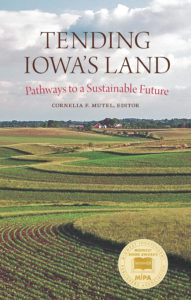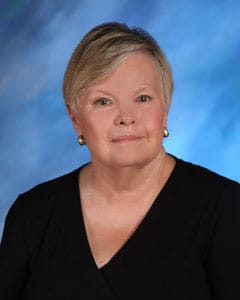Review of “Tending Iowa’s Land: Pathways to a Sustainable Future”
Reviewed by Carol Smith
 As I read “Tending Iowa’s Land: Pathways to a Sustainable Future,” a collection of essays edited by Cornelia Mutel and featuring writings by several PFI members, I reflected on the interesting words chosen for the tile of a book about Iowa’s land.
As I read “Tending Iowa’s Land: Pathways to a Sustainable Future,” a collection of essays edited by Cornelia Mutel and featuring writings by several PFI members, I reflected on the interesting words chosen for the tile of a book about Iowa’s land.
Consider “tending,” which means “to take care of, watch over or be in charge of, manage or operate,” or “pay attention to and do what is necessary to keep in good condition.” This word introduces us to the central question the book explores: How do we apply information to create a practical form of action? The word “pathways” reflects how Cornelia has chosen to frame the huge task of making a sustainable future for Iowa’s agriculture.
The book is organized into sections based around four pathways: soil, water, air and life. They speak to the crucial nature of these components, and how we can think about approaching the changes we need to make to move into that sustainable (and regenerative) future. We do indeed “make a path by walking.” Each section includes chapters by people recognized as experts in their field, who help ground readers in the science and data connected to each pathway.
Their insights are complemented by personal reflections from farmers and others – people who are already walking the path to a regenerative future. This on-the-ground experience shows readers how they too can embark on the path to sustainability. Paired with the scientific background, these how-to insights suggest ways we can act to change the future. What’s clear is that it will take everyone’s cooperation, collaboration and commitment. But these authors also point out that the efforts of many individuals make a difference. So does building outside connections, especially with consumers. These writers show that when scientists, policymakers and the public join hands in support, problems can be addressed.
Despite the apparent segmentation within the book, “Tending Iowa’s Land” offers readers a chance to see commonalities that thread through and connect the different pathways – including how the science can help guide us towards the future. Four commonalities especially stood out to me. First, we already have the technologies and methods we need to move to a sustainable future. Second, for all four pathways, we are at a crossroads, and we can choose a better future. The biggest challenge, however, is perhaps societal will: The path is well lit and open, but will we take it? Finally, creating a sustainable future for our soil, water, air and life requires partnerships and collective vision.
My professional experience with bringing people together in communities to support action tells me that the first step is always listening to each other. By reading the information and conversations in this book, we can start finding ways to talk to each other. It’s my belief that when we’re open to learning from each other, we create the connections and networks needed to make those collective decisions that will help lead us, together, on the path to a sustainable, regenerative future.
 Carol Richardson Smith and her husband, Bob, are longtime members and friends of PFI. They live west of Perry, Iowa, on an acreage with three perennial gardens, a vegetable garden and a huge raised bed that becomes a low tunnel-cold frame in winter.
Carol Richardson Smith and her husband, Bob, are longtime members and friends of PFI. They live west of Perry, Iowa, on an acreage with three perennial gardens, a vegetable garden and a huge raised bed that becomes a low tunnel-cold frame in winter.
Carol has a background in vocational and adult education and extension, participatory process design and program management. Much of her work in the last 20 years has focused on local food and the agriculture that supports it. Bob is a Master Gardener who has also managed co-ops and built a small business assembling ag equipment.
